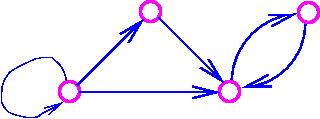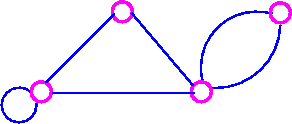Null Graphs
A null graphs is a graph containing no edges. The null graph with n vertices is denoted by Nn. The following are the examples of null graphs.
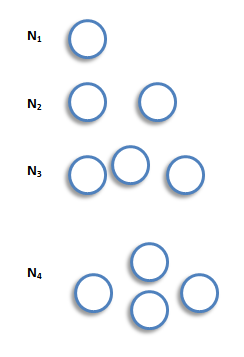
Cycle Graphs
A cycle graph is a graph consisting of a single cycle. The cycle graph with n vertices is denoted by Cn. The following are the examples of cyclic graphs.
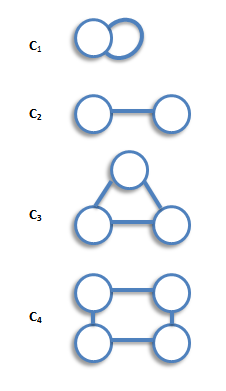
Path Graphs
A path graph is a graph consisting of a single path. The path graph with n vertices is denoted by Pn. The following are the examples of path graphs.

Note that path graph, Pn, has n-1 edges, and can be obtained from cycle graph, Cn, by removing any edge.
Bipartite Graphs
A bipartite graph is a graph whose vertex-set can be split into two sets in such a way that each edge of the graph joins a vertex in first set to a vertex in second set. The examples of bipartite graphs are:
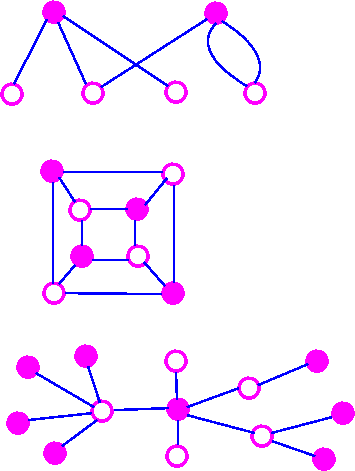
Complete Bipartite Graph
A complete bipartite graph is a bipartite graph in which each vertex in the first set is joined to each vertex in the second set by exactly one edge. The complete bipartite graph with r vertices and 3 vertices is denoted by Kr,s. The following are some examples.
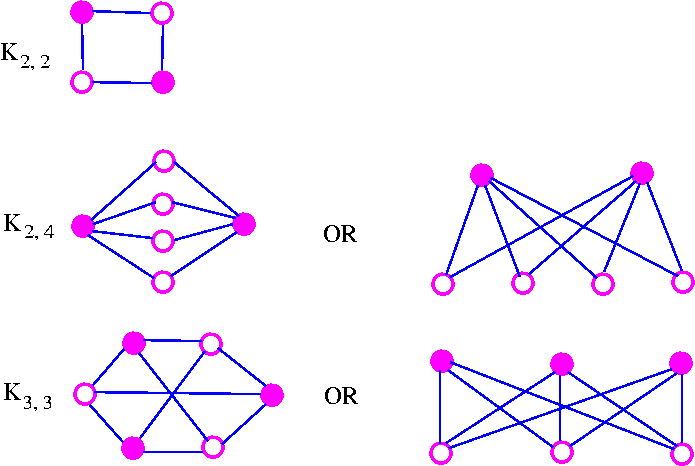
Note that Kr,s has r+s vertices (r vertices of degrees, and s vertices of degree r), and rs edges. Note also that Kr,s = Ks,r. An Important Note: A complete bipartite graph of the form Kr,s is called a star graph.
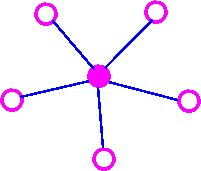
Cube Graph
The cube graphs is a bipartite graphs and have appropriate in the coding theory. The cube graphs constructed by taking as vertices all binary words of a given length and joining two of these vertices if the corresponding binary words differ in just one place. The binary words of length k is called the k-cube (or k-dimensional cube) graph and is denoted by Qk. The following are some examples.
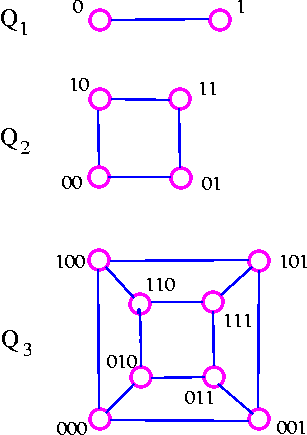
Note that Qk has 2k vertices and is regular of degree k. It follows from consequence 3 of the handshaking lemma that
Qk has k* 2k-1 edges.
The Peterson Graph
This graph is named after a Danish mathematician, Julius Peterson(1839-1910), who discovered the graph in a paper of 1898.
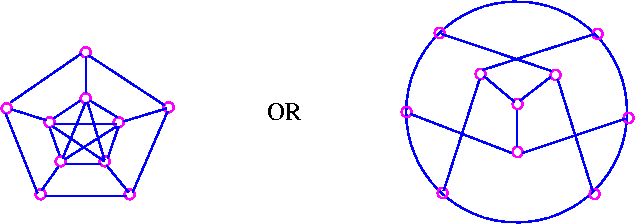
Tree Graph
A tree is a connected graph which has no cycles.

Spanning Tree
If G is a connected graph, the spanning tree in G is a subgraph of G which includes every vertex of G and is also a tree. Consider the following graph
Interval Graphs
Consider the intervals (0, 3), (2, 7), (-1, 1), (2, 3), (1, 4), (6, 8) which may be illustrated as
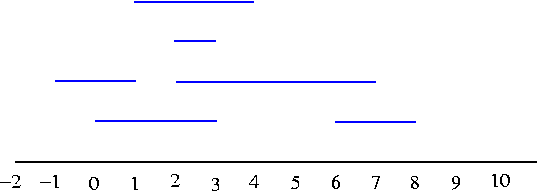
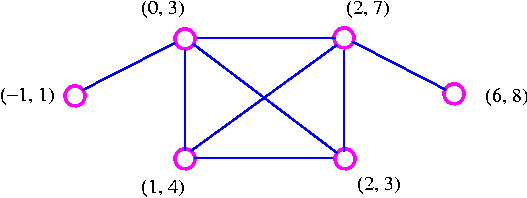
Note that since the intervals (-1, 1) and (1, 4) are open intervals, they do not have a point in common.
Definition of Diagraph
A directed graph or diagraph D consists of a set of elements, called vertices, and a list of ordered pairs of these elements, called arcs. The set of vertices is called arcs. The set of vertices is called the vertex-set of D, denoted by V(D), and the list of arcs is called the arc-list of D, denoted by A(D). If v and w are vertices of D, then an arc of the form vw is said to be directed from v to w, or to join v to w.
![]()
The underlying graph of diagraph is the graph obtained by replacing each arc of diagraph by corresponding (undirected) edge. For example, consider the following digraph
